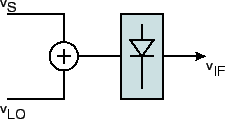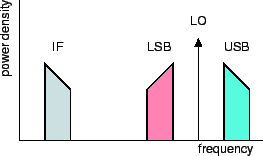
 |
The first reason why heterodyne down-conversion is needed is that only few signal processing devices exist at millimeter frequencies, and definitely not the fully parallel spectrometers (as opposed to multiplex devices such as FTS) that are routinely used for spectroscopic observations.
Then arises the question of where in the signal processing chain to operate the down-conversion. Basically we have no choice, because hardly any amplifiers are available in the millimeter range, except in the 3mm band, where they do not match the low noise properties of SIS mixers (to be discussed below). So we must perform a down-conversion before we can amplify the signal.
Before we leave the topic, it is worth noting that heterodyne means different things to different people. For engineers, it means that a mixer is used for down-converting the signal frequency; that's how the word is used above. For astronomers, heterodyne receivers are associated with spectroscopic observations; yet, there is only a quantitative difference, but no essential difference, between bolometer detection with a 80-GHz bandpass, and observing with a filterbank having 1-MHz bandpass. Finally, for physicists, heterodyne means with phase-preserving. In that sense, indeed, a bolometer is not phase-preserving, while a ``heterodyne'' receiver is phase-preserving only if it is defined without the final detector.